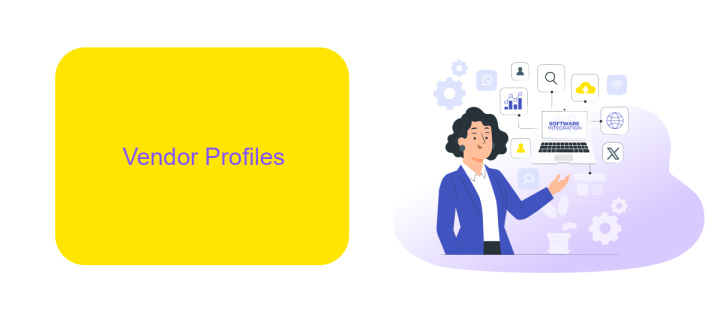Low-Code No-Code Magic Quadrant
The Low-Code No-Code Magic Quadrant provides a comprehensive analysis of the leading platforms in the rapidly evolving low-code and no-code development market. As businesses strive for greater agility and faster time-to-market, these platforms empower users of varying technical expertise to build applications efficiently. This article delves into the key players, trends, and innovations shaping this dynamic landscape.
Market Overview
The Low-Code No-Code market is experiencing rapid growth as businesses seek faster and more efficient ways to develop applications. This technology enables users with minimal coding knowledge to create complex applications, reducing dependency on traditional development teams.
- Accelerated time-to-market for applications
- Increased productivity and reduced development costs
- Enhanced collaboration between IT and business teams
- Greater flexibility and scalability in application development
One significant advantage is the ease of integrating various services and APIs into applications. Platforms like ApiX-Drive simplify this process, allowing users to seamlessly connect different software tools without extensive coding. As a result, businesses can automate workflows and optimize operations, further driving the adoption of Low-Code No-Code solutions.
Vendor Profiles

In the rapidly evolving landscape of Low-Code No-Code platforms, several key vendors have distinguished themselves by offering innovative solutions tailored to diverse business needs. These vendors provide powerful tools that enable organizations to develop applications with minimal coding expertise, significantly accelerating the development process and reducing costs. Among these leaders, companies like OutSystems, Mendix, and Appian have consistently demonstrated their ability to deliver robust, scalable, and user-friendly platforms that cater to both technical and non-technical users.
One notable service in this ecosystem is ApiX-Drive, which excels in simplifying integration processes. ApiX-Drive allows users to seamlessly connect various applications and automate workflows without requiring deep technical knowledge. This service enhances the functionality of Low-Code No-Code platforms by providing a straightforward method to integrate disparate systems, thereby streamlining operations and boosting productivity. As organizations continue to seek efficient ways to leverage technology, the role of such integration services becomes increasingly vital.
Critical Capabilities

Low-Code No-Code platforms are revolutionizing the way organizations develop applications by enabling users with minimal coding skills to create robust solutions. These platforms offer several critical capabilities that are essential for their effective utilization and deployment.
- Ease of Use: The intuitive drag-and-drop interfaces allow users to design applications quickly without extensive coding knowledge.
- Integration Capabilities: Seamless integration with existing systems and third-party services, such as ApiX-Drive, ensures smooth data flow and enhances operational efficiency.
- Scalability: The ability to scale applications to meet growing business demands is crucial for long-term success.
- Security: Robust security features, including data encryption and user authentication, protect sensitive information.
- Customization: Flexibility to customize applications to meet specific business needs without compromising on performance.
Platforms like ApiX-Drive play a pivotal role in enhancing the integration capabilities of Low-Code No-Code solutions. By providing easy-to-use tools for connecting various applications and automating workflows, ApiX-Drive helps businesses streamline operations and improve productivity, making it an invaluable asset in the Low-Code No-Code ecosystem.
Evaluation Criteria

When evaluating Low-Code No-Code platforms, it's crucial to consider several key criteria to ensure the solution meets your business needs. These criteria help in assessing the platform's capabilities, flexibility, and overall value.
Firstly, consider the platform's ease of use. A user-friendly interface is essential for enabling non-technical users to create applications without extensive training. Secondly, assess the range of functionalities offered, including the ability to handle complex workflows and integrations.
- Usability and User Interface
- Functional Scope and Customization Options
- Integration Capabilities (e.g., ApiX-Drive)
- Scalability and Performance
- Security and Compliance
- Support and Community Resources
Integration capabilities are particularly important, as they determine how well the platform can connect with other tools and services. For instance, ApiX-Drive offers seamless integration solutions, allowing businesses to automate workflows and synchronize data across various applications effortlessly. This ensures that the Low-Code No-Code platform can be effectively incorporated into your existing tech ecosystem.


Next Steps
As organizations continue to explore Low-Code and No-Code platforms, it is crucial to evaluate their specific needs and goals. Start by identifying key business processes that can benefit from automation and enhanced efficiency. Engage with stakeholders to gather requirements and prioritize features that will drive the most value. Additionally, consider the scalability and flexibility of the platform to ensure it can grow with your organization.
Next, focus on integrating these platforms with existing systems to create a seamless workflow. Tools like ApiX-Drive can simplify this process by providing ready-to-use connectors and automation capabilities. This will enable smooth data transfer and synchronization across different applications, enhancing overall productivity. Regularly review and optimize your Low-Code and No-Code solutions to keep up with evolving business needs and technological advancements.
FAQ
What is the Low-Code No-Code Magic Quadrant?
How do Low-Code and No-Code platforms differ?
Why are Low-Code and No-Code platforms important for businesses?
Can Low-Code and No-Code platforms handle complex integrations?
What should I consider when choosing a Low-Code or No-Code platform?
Time is the most valuable resource for business today. Almost half of it is wasted on routine tasks. Your employees are constantly forced to perform monotonous tasks that are difficult to classify as important and specialized. You can leave everything as it is by hiring additional employees, or you can automate most of the business processes using the ApiX-Drive online connector to get rid of unnecessary time and money expenses once and for all. The choice is yours!

